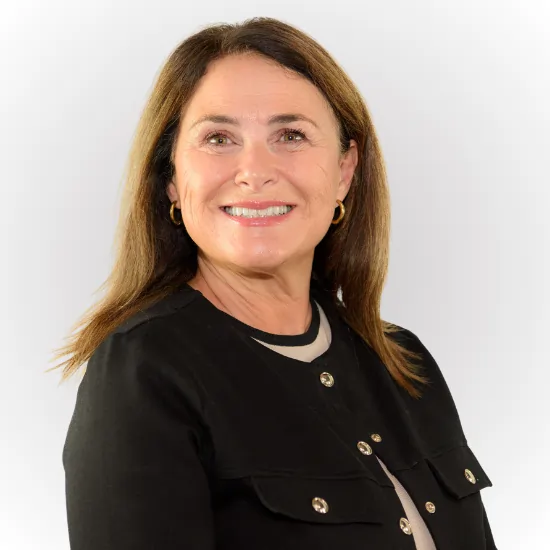The sexual violence awareness campaign, Always Here, has been launched to provide survivors in Ireland with information on supports, safety planning, and available services.

Rhinoplasty is a complex surgical procedure performed for medical and aesthetic reasons, requiring precision and expertise. Surgical errors during rhinoplasty can result in breathing difficulties, asymmetry, infections, or other complications requiring corrective procedures. If you have suffered due to a mistake during rhinoplasty, you may be entitled to pursue a rhinoplasty surgical error claim. Our experienced rhinoplasty surgical error team specialises in handling cosmetic and surgical negligence claims, ensuring your case is managed professionally and carefully. We are committed to helping you seek the compensation and justice you deserve.
For a confidential consultation, please get in touch with us at Free Phone 1800-844-104 or email [email protected]. You can also visit us at our 84 Talbot Street, Dublin 1, Ireland office.
Rhinoplasty is a complicated and delicate nasal surgery with aesthetic and functional aspects that take years of surgical experience to master. Some of the most common problems that arise after rhinoplasty are:
A natural-looking nose has a slight depression as the nose transitions from the bridge to the tip. In the case of the Polly beak deformity, however, this bridge area above the tip is too high, giving the nose an appearance like a parrot’s beak. Three complications during rhinoplasty can lead to this problem, one of the most commonly seen after rhinoplasty surgery.
A cartilaginous Polly beak deformity occurs when too much cartilage is left after surgery, and revision rhinoplasty to correct this would involve shaving down the extra cartilage.
A soft tissue Polly beak deformity occurs when a surgeon removes too much soft tissue on a patient with thick skin so the skin doesn’t properly contract and flatten out, causing excessive scar tissue to form in the area.
Where the original surgeon fails to leave enough support for the tip of the nose, and it droops over time, making the area above the tip appear to project too far. Revision rhinoplasty to address the problem requires the surgeon to reconstruct the nasal tip so it has adequate support.
The “Middle Vault,” also known as the “Inverted V Deformity,” occurs when a bump is removed from the central nose, but inadequate support is provided. The center of the nose collapses, both inhibiting breathing and making the nasal bones visible to the naked eye in the shape of an inverted “V.” Breathing will also be inhibited when the removal of a bump causes the collapse of the narrowest area inside the nose, the internal nasal valve. As with a scooped-out bridge, a revision rhinoplasty to address a collapsed central nose or internal valve collapse involves rebuilding the missing area with the patient’s cartilage.
Other general aesthetic concerns relating to the bridge can occur after a rhinoplasty procedure. The central nose forms the transition from the bridge to the tip and must be in proper proportion to blend the two in an aesthetically harmonious relationship seamlessly.
A deviated nose has a twist in the upper, middle, or tip. It is one of the most challenging problems to address through rhinoplasty and can persist after an original rhinoplasty or a revision rhinoplasty. It can even be introduced through a rhinoplasty or revision rhinoplasty procedure.
One of the most common mistakes seen following rhinoplasty is the over-projected tip. Once a prominent bump is removed, patients often discover that the tip of the nose projects too far from the face.
If the two projecting points of cartilage that support the nose tip are too aggressively removed, they will lose their springy structure and the remaining cartilage will begin to bend and twist. This causes a problem called “bossae” or “knuckling”, where the cartilage turns upon itself and the weakest points at the joints of the cartilage form very noticeable bumps or “knuckles.”
Rhinoplasty involves two procedures, one to the right side of the nose and one to the left. In every stage of the surgery, great attention must be paid to symmetry. The cartilage on both sides of the nose tip must be removed to the same degree, or an asymmetric tip will result. Asymmetries may also occur due to unequal scarring during the healing process and not reveal themselves until months or even years later.
The terms below briefly describe the types of Rhinoplasty offered in Ireland. Rhinoplasty: a surgery that changes the nose’s form (or shape) and function (breathing).
To improve or restore breathing function through the nose. This surgery may also change the shape of the nose.
To change the shape of the nose for aesthetic reasons.
This leaves an external scar on the columella but gives the advantage of improved access, which may be necessary in some cases.
Operation through nares (nose openings) with no external scars.
Usually, a cosmetic surgery procedure is used to modify the shape of the tip of the nose.
To improve breathing when the nasal valves are dysfunctional or compromised.
Rhinoplasty in a child under eighteen years of age is usually done to restore or improve the functionality of the breathing process through the nose.
Injury to nasal bones may necessitate formal rhinoplasty if not addressed adequately in time.
Nose injury leading to nasal cartilage dislocation or fracture. Septoplasty may be required if nasal obstruction persists. This is routinely performed after 6-12 months (interval septoplasty), allowing the scar tissues to mature and allowing predictable results after correction.
Surgery for correction of nasal blockage caused by bent septal cartilage. The Septum is the party wall that divides the nose into the right and left cavities.
You should speak to a rhinoplasty surgical error Solicitors as soon as possible if you think you were not given an adequate or appropriate level of medical care, resulting in an injury or illness.
After the consultation with your rhinoplasty surgical error solicitor, he/she will request access to your medical records and engage an independent medical expert to assess your records. The purpose of engaging an independent expert is to establish whether there was any negligence on the medical professional’s part.
Where the independent medical expert is of the professional opinion that medical negligence did occur, as you instructed, your solicitor will begin issuing legal proceedings in Court against the medical professional and/or hospital.
The legal time limit to make a rhinoplasty surgical error claim is two years from the date of injury or date of knowledge that the injury or illness resulted from medical negligence. For children/minors, the time limit expires two years after their 18th birthday. You can contact a solicitor to talk about your case and inform you about the statute of limitations applicable to your case.
At Coleman Legal LLP, we have extensive experience handling rhinoplasty surgical error claims and providing expert legal support to those affected by medical negligence. Our dedicated team understands the complexities of surgical error cases and is committed to guiding you through the legal process with professionalism and care. We offer personalised legal advice to help determine whether you have grounds for a claim due to surgical negligence, misdiagnosis, or delayed diagnosis. If you believe that errors during your rhinoplasty procedure have caused harm or complications, our rhinoplasty surgical error solicitors can assess your case and advise on the best course of action. Call us at 1800-844-104 (Freephone) for a confidential consultation or complete our online enquiry form.
Solicitors
84 Talbot Street, Dublin 1
D01 YX60
DX 112002
Free Phone: 1800-844-104
Fax: (01) 5312727
Email: [email protected]
Web: www.colemanlegalpartners.ie
Online Enquiry Form: Apply

Head of Client Services
P: 1800-844-104
E: [email protected]
”At Coleman Legal, excellence in customer care is paramount. We aim to meet both prospective and existing client’s needs in a professional, engaging, and friendly manner with a clear objective to give quality legal advice and reach a positive outcome.”